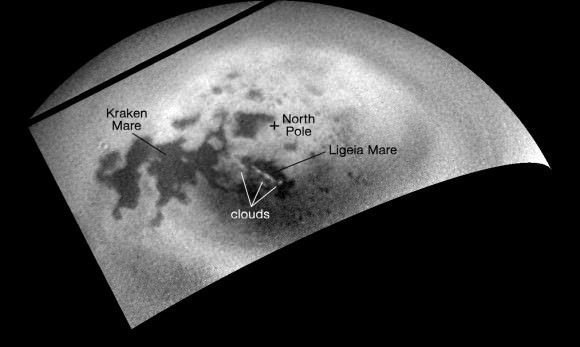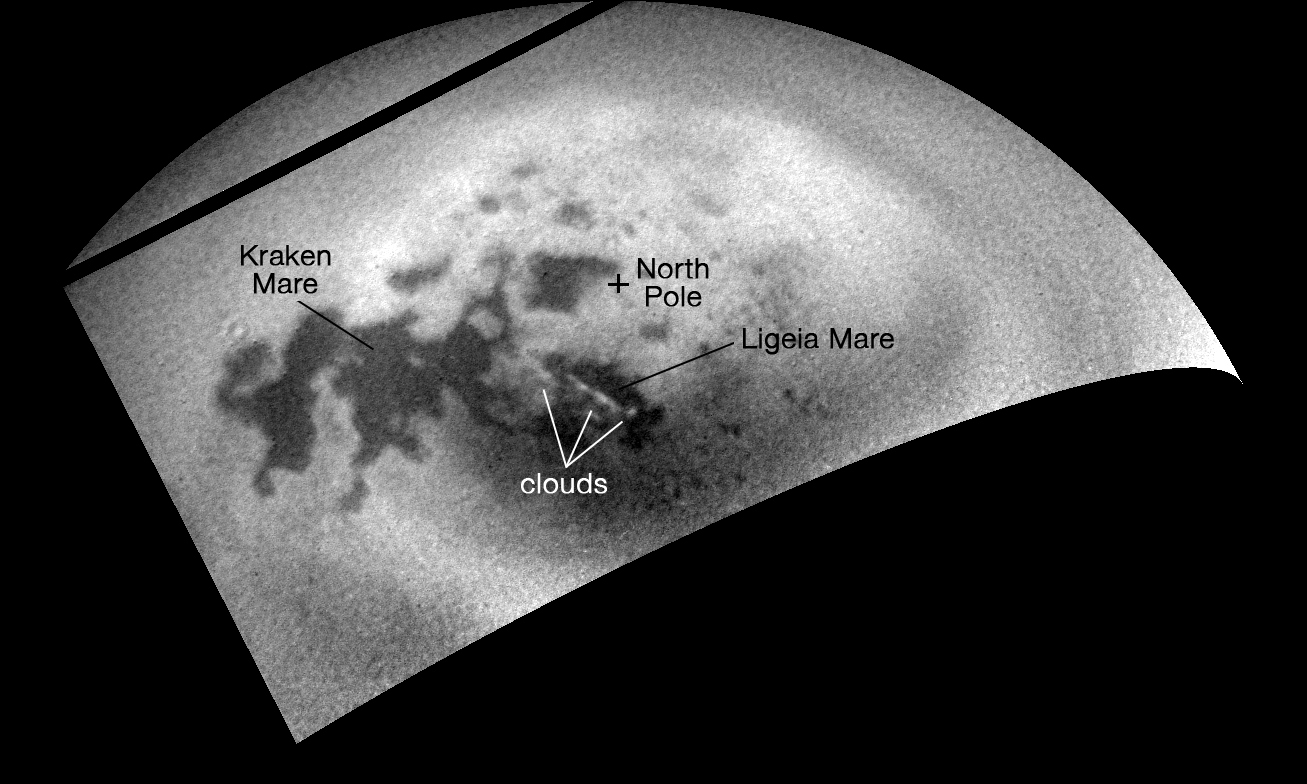Swoosh! At long last, and later than models predicted, clouds are starting to appear on Titan’s nothern hemisphere. The region is just starting to enter a seven-year-long summer, and scientists say this could be an indication of coming summer storms there.
This moon of Saturn is of particular interest to astrobiologists because it has hydrocarbons (like ethane and methane), which are organic molecules that are possible precursors to the chemistry that made life possible. But what is also neat about Titan is it has its own weather system and liquid cycle — which makes it closer to Earth than to our own, nearly atmosphere-less Moon.
“The lack of northern cloud activity up til now has surprised those studying Titan’s atmospheric circulation,” wrote Carolyn Porco, the imaging lead for Cassini, in a message distributed to journalists.
“Today’s reports of clouds, seen a few weeks ago, and other recent indicators of seasonal change, are exciting for what they imply about Titan’s meteorology and the cycling of organic compounds between northern and southern hemispheres on this unusual moon, the only one in our solar system covered in liquid organics.”

The pictures were taken by the Cassini spacecraft, which has been orbiting Saturn and its moons since 2004. The satellite arrived at the system in time to see clouds forming in the southern hemisphere, but the moon has been nearly bereft of clouds since a large storm occurred in 2010.
This particular cloud system occurred over Ligeia Mare, which is near Titan’s north pole, and included gentle wind speeds of about seven to 10 miles per hour (11 to 16 kilometers per hour.)
The sequence takes place between July 20 and 22, with most of the pictures separated by about 1-2 hours (although there is a 17.5-hour jump between frames 2 and 3.)
Sources: NASA Jet Propulsion Laboratory and Cassini Imaging Central Laboratory for Operations (CICLOPS)


I can’t believe that this amazing robot has been swirling around Saturn for 10 YEARS and is still providing us with discoveries on a regular basis. Cassini rocks!